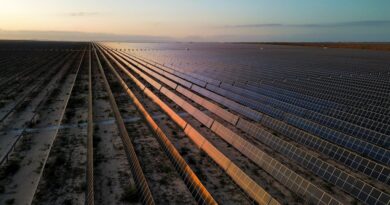PLATINUM: Deficit of 816 koz in Q1 2025 on lower supply and higher demand
During Q1 2025, platinum supply and demand trends diverged. Total platinum supply declined by 10% year-on-year due to a 13% year-on-year decline in mine supply (-117 koz) which was partially offset by a 2% increase in recycling (+6 koz). In South Africa, mining was impacted by heavy rainfalls which led to flooding and lost production. This was compounded by depressed smelter availability in South Africa and Zimbabwe, while in North America, production was negatively impacted by planned mine restructuring. Total platinum demand increased by 10% year-on-year (+215 koz) in the first quarter. Higher demand was primarily underpinned by growth in investment ounces where, in response to the threat of tariffs being applied to platinum imports, markets pre-emptively moved metal into the US, including into NYMEX warehouses, supporting a +361 koz increase in stocks in Q1 2025.
As expected, cyclically depressed glass capacity additions in Q1 2025, weighed on industrial platinum demand (-22% year-on-year), while automotive platinum demand shrank by 4% year-on-year as production of catalysed vehicles declined. The net impact in Q1 2025 was a market deficit of 816 koz, the largest quarterly deficit in six years.
Updated 2025 outlook
Platinum supply is expected to be depressed in 2025, declining by 4% year-on-year. For the remainder of 2025, mine supply is forecast to sequentially improve after an unexpectedly weak first quarter, however, full year output will still be 6% lower than in 2024 (-355 koz) since South African producers will not benefit from the large drawdown of work-in-process inventory that occurred last year. Recycled platinum supply is forecast to increase by a modest 3% year-on-year in 2025. Autocatalyst scrap recovery has stabilised off a low base in western markets, while China should report higher output as scrap availability benefits from government incentives to scrap older vehicles. Turning to demand, the largest driver of a 4% year-on-year decline in annual platinum demand stems from lower industrial demand (cyclically weak glass capacity expansions). However, elevated risks to international trade flows have introduced considerable risks for the 2025 demand outlook. Encouragingly, platinum’s diverse end-markets are expected to limit downside risks from a trade slowdown during 2025. The downward revisions for 2025 to platinum automotive demand and regional jewellery markets which export to the US have been offset by upward revisions to platinum investment demand and platinum jewellery demand in China. Combining the supply and demand outlook results in a projected deficit of 966 koz for 2025 equivalent to 12% of annual platinum demand.




